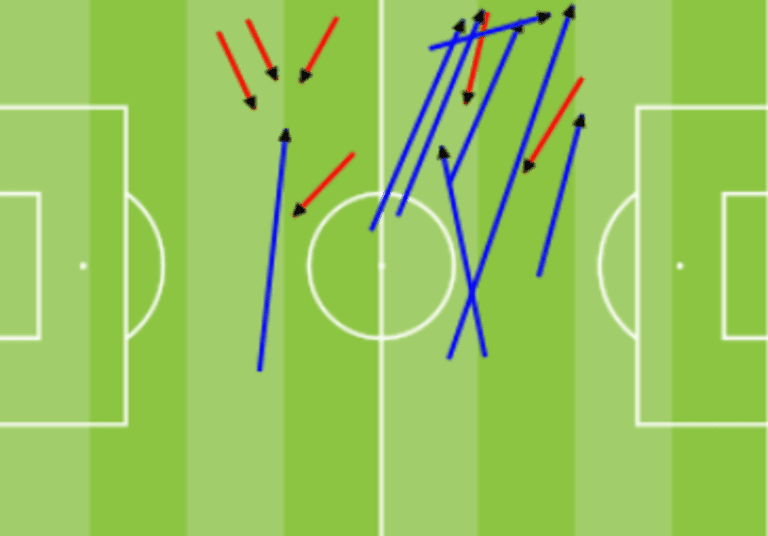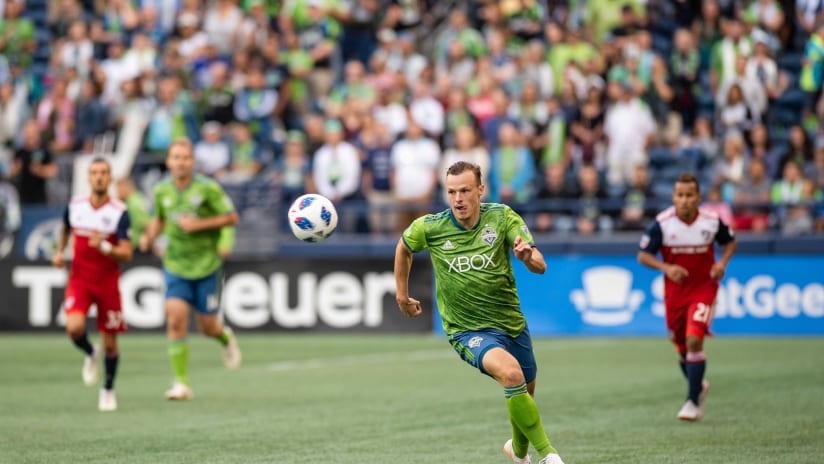On Sunday, August 12, Seattle Sounders’ newest signing Brad Smith made his MLS debut, starting in the 2-1 win over FC Dallas. The Australian left back demonstrated why the technical staff rated him so highly, with his comfort on the ball, blazing speed, aerial ability and crossing technique all on display.
In a match that was always going to be won on the wings, Smith put in a solid two-way performance as he locked down danger-man Michael Barrios and pinned by Dallas’ dynamic right back, Reggie Cannon, with his willingness to bomb down the flanks and overload the attack.
“It was pretty good,” said Sounders FC Head Coach Brian Schmetzer on Smith’s debut. “You guys saw what Garth [Lagerwey], Chris [Henderson], and those guys saw. He’s got good speed, good crossing ability. [He is an] attack-minded player.”
While Smith compiled some decent statistics on his debut – he had one tackle, three successful dribbles, four crosses and won 50% of his duels – his skill set and ability to interchange with the players around him portend a bright future in Rave Green.
In the opening minutes, Smith showcased his cultured left foot as he played a cross into the danger zone between Dallas’ retreating defenders and goalkeeper Jesse Gonzalez, which Cristian Roldan nearly dispatched at the back post. But what really caught the eye throughout the match was the variety of his crosses as he switched it up between getting to the byline for cutbacks and shaping crosses around FCD’s back-line from a deep-lying position.
When Smith’s signing was first announced, there was ample speculation about whether he would play as a left back, left wingback, or a left midfielder. With Gustav Svensson at defensive midfield, the answer is all three, as the Swede’s versatility provides tactical flexibility for the Sounders.
When Svensson sat alongside Osvaldo Alonso in the double-pivot, Smith largely operated as a traditional left back. In fact, the pair linked up on several occasions, playing quick 1-2 exchanges and sending Smith into the attack.

Opta passing exchange map between Smith (red) and Svensson (blue)
But when Goose dropped in between the center backs as Seattle attempted to build out of the back, the Aussie defender occupied a much more advanced position, much like one would expect from an archetypal wingback. This tactical diversity largely kept Cannon pinned in his own defensive third, wary of joining Barrios or Urruti in the attack as Smith possesses the pace to punish the Homegrown defender for venturing forward.
Seattle’s wide midfielders in the 4-2-3-1 love to cut inside and combine in the final third to unbalance the opposition defense. In order for this system to be effective, you need the outside backs to push forward on the overlap, dragging defenders out wide and creating gaps for intelligent players like Harry Shipp, Nico Lodeiro and Roldan to run through.
Moreover, Shipp is so effective at creating space with his off-the-ball movement that it will create running lanes for Smith to exploit, as depicted in the above play.
When playing in transition, Smith possesses the pace to run two-man counter-attacking sequences with Raúl Ruidíaz. The Peruvian forward reads visual cues brilliantly, starting on the backside of a defender before darting in front and re-directing shots, which dovetails nicely with the Australian international’s quality service. As Seattle’s newest signings build chemistry, expect the pair to linkup in transition.





